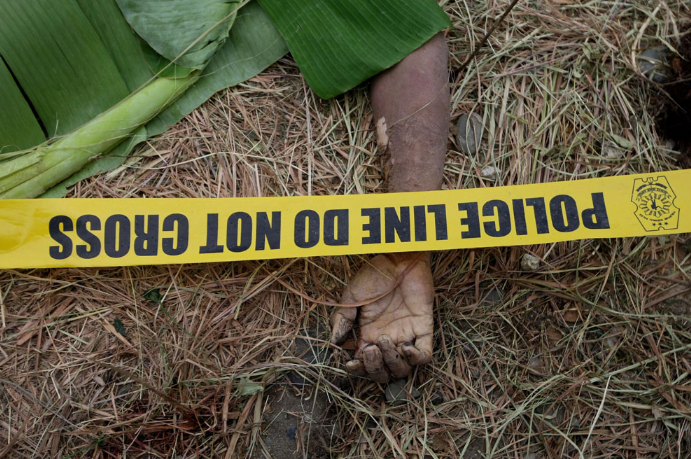
Image Credit: Rolex Dela Pena, European Press Photo Agency
H/T: Lens, The New York Times
While scrolling through the Lens photojournalism blog this morning I came across this photograph of a the hand of a dead body partially obscured by caution tape. The photographed victim was one of over forty people killed in violence following the election on Monday in the Philippines--many of the people kidnapped and killed were lawyers, journalists, and relatives of a local politician. What struck me most about this image was its relationship to text; both within the photograph and beneath it in the caption. Across the image the photographer has captured the text of the caution tape "Police Line Do Not Cross." It seems, however, that the photographer and the viewer disregard this warning by visually transgressing past the barrier and the victim's hand disregards this warning by physically transgressing beyond the tape. It is the textual warning on the tape that contributes to a sense of action within the image--agency on the part of the victim and the intrusion on the part of the viewer/photographer.
This possibility of action dissipates when we consider the text beneath the photograph. The caption reads, "A dead body was covered in banana leaves along a hillside in Ampatuan, Maguidanao Province in the southern Philippines. The Philippines declared emergency rule and dispatched additional security forces to a southern province as the death toll in the country's worst election-related violence reached 46." Susan Sontag has argued that the caption is an attempt to fix the meaning of the image and that "only that which narrates can make us understand" (Sontag, On Photography). This caption certainly does fix the significance of the photograph--there is no agency left for this victim. The passive construction of the description, the lack of any attempt to identify the dead body strip the victim of any ability to signify on his or her own. Moreover, the quick jump to the ongoing violence fixes the significance within a national context.
Of course, this type of captioning both within and beneath the photograph is prevalent (and probably necessary) in all documentary photojournalism. Miles Orvell has considered the horrific subject matter focused on by documentary photographs as a visual tactic aimed to help us “overcome our
habituation to shocking images…to make us feel the burden of our own responsibility" (Orvell, American Photography). Certainly this documentary image of the violence in the Philippines, like all documentary images, draw the viewer’s attention to a social issue with
the intention of inspiring change.
However, there seems little guarantee that the photographs of bodies in
pain or of people in need will be little more than invitations to voyeurism. This image highlights this problem with
documentary photography more intensely through the inclusion of the outstretched hand—the
reaching hand suggests in some way that this subject is calling out for aid. There is, however, no assurance that looking at a
documentary photograph will motivate that viewer towards political or social
action. Enter the caption as the attempt to cajole that viewer into action.
The relationship between a documentary photograph, the caption, and the call to action was of particular importance to documentary photographer Dorothea Lange. Linda
Gordon argues that much of Lange’s FSA photography was explicitly political and
aimed at creating specific changes in agricultural policy. The difficulty of communicating an
immediate social reality drove Lange to write extensive captions for her documentary
images because she “wanted to fix the meanings of photographs” (Gordon, “The Photographer as Agricultural Sociologist” The Journal of American History December 2006, 717-718). The images of Lange and other FSA
photographers did help to galvanize public support for the federal relief
programs of the New Deal. However,
simply because these images contributed to broader social change does not mean
that they always did or always will communicate a social and political
message. There is no guarantee
that the documentary image will be interpreted as a call to political and
social action no matter how extensive the caption.

Recent comments
2 years 29 weeks ago
2 years 44 weeks ago
2 years 44 weeks ago
2 years 50 weeks ago
3 years 4 weeks ago
3 years 4 weeks ago
3 years 4 weeks ago
3 years 6 weeks ago
3 years 6 weeks ago
3 years 6 weeks ago